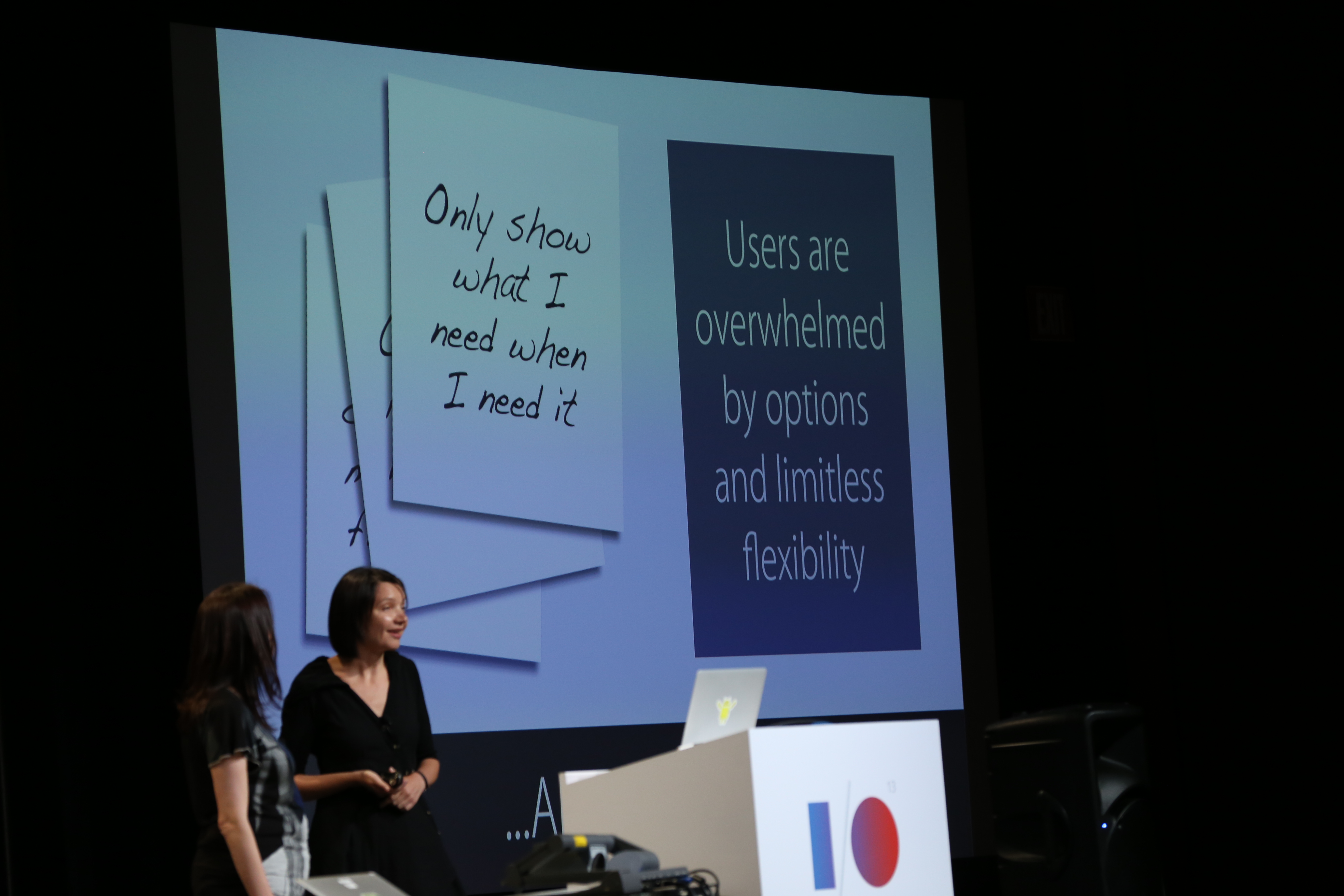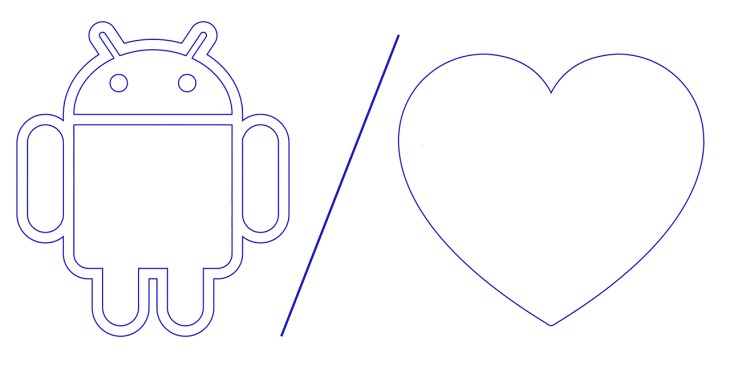Android UX and interaction design leads Helena Roeber and Rachel Garb gave a talk at Google I/O this year about the Android Design Principles (ADP) they helped create and introduced back in 2012 with the launch of Android 4.0 Ice Cream Sandwich. The ADP foll three simple principles, essentially “enchat, simplify and amaze,” but there’s much more to those principles that that relatively slippery and non-scientific language might lead you to believe.
In fact, Garb and Roeber have based the ADP on compelling recent research that suggests eliciting negative emotional responses have an outsized effect on user experience, and require lots more counterbalance in terms of positive experiences to achieve a net positive, or even net zero lasting impression.
The Math Of Joy
 They cited a John Gottman study that found successful marriages maintain around a 5:1 ration of pleasant feelings to bad, whereas those with more like a 1:1 ration have a far greater chance of ending in divorce. Another study they cited offers insight into team productivity, which suggests that positive-to-negative interactions in a work group setting operating in at least a 3:1 ratio result in much more productive teams than those with more negative experiences. Finally, they suggested that humans need three positive experiences to compensate for every bad one.
They cited a John Gottman study that found successful marriages maintain around a 5:1 ration of pleasant feelings to bad, whereas those with more like a 1:1 ration have a far greater chance of ending in divorce. Another study they cited offers insight into team productivity, which suggests that positive-to-negative interactions in a work group setting operating in at least a 3:1 ratio result in much more productive teams than those with more negative experiences. Finally, they suggested that humans need three positive experiences to compensate for every bad one.
A lot of that may sound obvious when simplified; it doesn’t take a genius to figure out that designers and app builders should strive to please their audiences. But the execution of enacting that pleasure is where things get interesting, and where Roeber and Garb’s insight really shone through. It’s one thing to say “okay, we won’t anger a user here, and we’ll make them happy instead,” and quite another to actually do it.
Putting Theory Into Action
Hearing them describe it, the ADP almost came about under a sort of moral obligation. Roeber described how the teams in charge of Android UX and interaction found that tech now has “a profound impact” on all of our lives, and as such, when things go wrong, we have a tendency to blame ourselves, and that can have a subtle but ultimately strong impact on people’s wellbeing.
“All those non-ideal implementations eroded people’s confidence in their own abilities and caused frustration,” she said, describing how even small things that you might not think that much about ultimately leave you with a tick in the negative column if left unresolved. So if you can’t figure out what you’ve done wrong in setting up Gmail on your phone, for instance, that’s something you’ll carry, and something that requires that much more to negate in terms of the overall karmic balancing act.
 The example offered by the presenters of how exactly this works in action in Android right now is the visual signal given for when you’ve hit the last of your home screens. Android users will know that you’re greated with a blue glow animation and a visual representation of a page turning up to suggested nothing underneath. It’s clear in what it indicates, but it’s less accusatory or finger-pointing than a text alert, Roeber explained, which can still make users feel admonished and leave them internalizing some blame.
The example offered by the presenters of how exactly this works in action in Android right now is the visual signal given for when you’ve hit the last of your home screens. Android users will know that you’re greated with a blue glow animation and a visual representation of a page turning up to suggested nothing underneath. It’s clear in what it indicates, but it’s less accusatory or finger-pointing than a text alert, Roeber explained, which can still make users feel admonished and leave them internalizing some blame.
Another example meant to explain how interface elements can not only minimize or eliminate bad feelings, but actually generate good ones was the Google Now art which occupies the search box when you call up Android’s digital personal assistant. It changes based on both location and time of day, and Roeber and Garb explained that in testing, the produced a reaction of wonder and enjoyment not just the first time it was encountered by users in testing, but every time after that as well, thanks to its dynamic nature. Experiences like this rack up positive emotions on the part of the user.
The Interface As The Ultimate Customer Service Rep
Essentially, what Roeber and Garb described in their chat is a means of combining the best possible way of tiptoeing around a potentially negative interaction with positive ones that excite and delight. It’s a simple calculus designed to result in an overwhelmingly net positive experience, the ultimate aim of which isn’t just to minimize the negative impact of the tech we now use constantly, but also to add points in the wins column that can be used to offset negative interactions that happen anywhere in our lives. The ADP isn’t conceived as a way to make using apps not suck, in other words; it’s actually designed to turn Android into a means of spreading happiness.
That’s an ambitious goal, but it’s impossible to deny that the experience of using Android on a daily basis has improved dramatically since the introduction of the ADP. And all of these improvements serve to illustrate how mobile software is perhaps at its best when it’s acting as the idealized customer service representative: friendly and informal, but not overly familiar; attentive to and anticipatory of your needs; gentle and kind when you’re barking up the wrong tree. A truly great customer service experience leaves you feeling lifted, capable, intelligent and happy. It’s more than fair to expect the same out of our device interactions.

